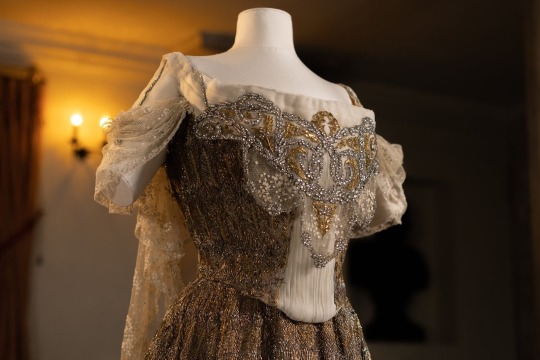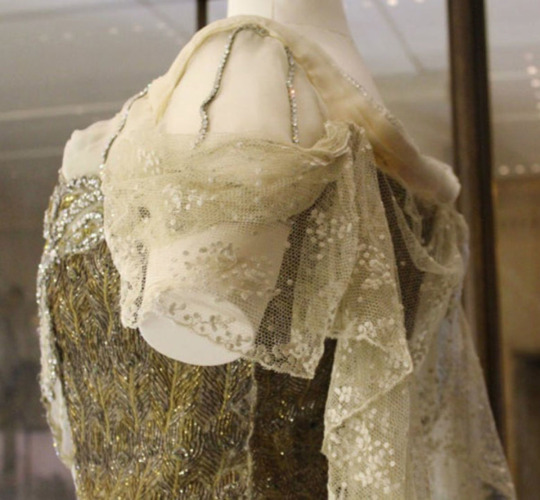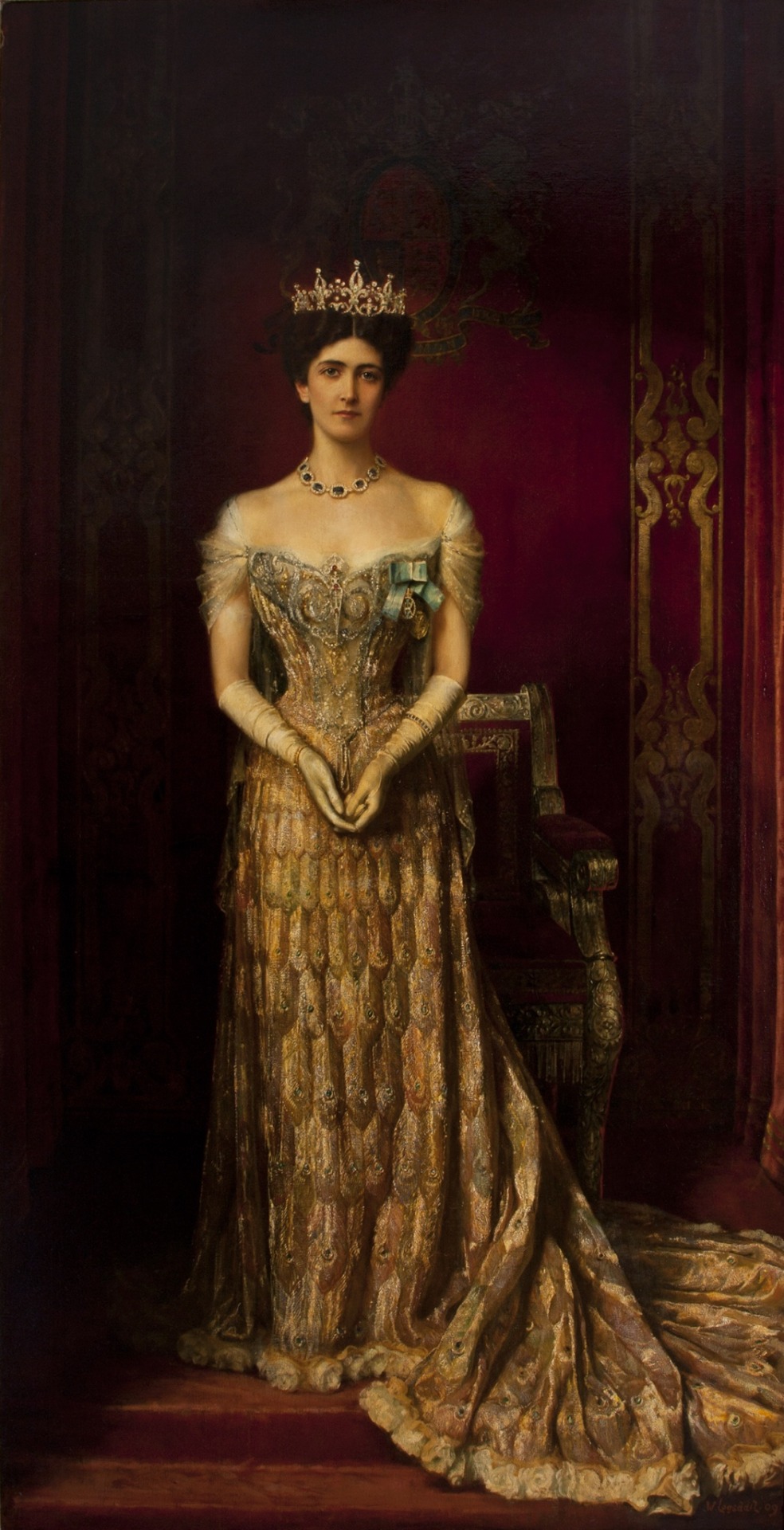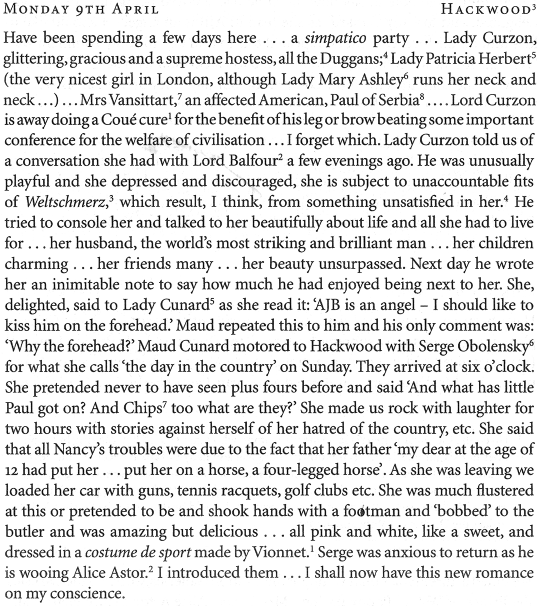#lady mary curzon
Explore tagged Tumblr posts
Text
A Brief History of British Coronations 1902-1937
On 6 May King Charles III will be crowned at Westminster Abbey in a ceremony that has its origins dating back a thousand years to King Edgar the Peaceful. It will also be the first coronation in nearly 70 years and much like his mother Queen Elizabeth II’s coronation which was the first to be televised, Charles III’s coronation will be the first to utilise both social media and YouTube as well as…

View On WordPress
#"I Was Glad"#20th century British History#A.B. Benson#Anna Keay#British Royal Family#Consuelo Duchess of Marlborough#coronation#Coronation Ode#Frederick Temple#Janet Ridley#King Charles III#King Edward VII#King William IV#Mary Lady Curzon#Queen Adelaide#Queen Alexandra#Queen Camilla#Queen Elizabeth II#Sir Arthur Sullivan#Sir Edward Elgar#Sir Hubert Parry#Suzy Menkes#William Maclagan
2 notes
·
View notes
Text

Portrait of Mary Victoria Leiter, the later Lady Curzon of Kedleston, Vicereine of India, 1887
Alexandre Cabanel
#Alexandre Cabanel#art#painting#fashion#art history#portrait#french art#1880s#aristocracy#fashion history
208 notes
·
View notes
Text

Mary Leiter, Lady Curzon, wearing a 1903 gown, The Peacock Dress", by Jean-Philippe Worth (House of Worth) • Portrait by William Logsdail (English,1859-1944) • 1909

The Peacock Dress today behind glass at the Curzon family seat in of Kedleston Hall in Derbyshire, England. Via/ Flickr
Lord and Lady Curzon (who was American) would end up in India, then a part of the English Empire. Lord Curzon was made Viceroy of India, which made his wife the Vicereine- the highest title that a woman in India could hold at the time.
To celebrate the 1902 coronation of King Edward VII, Lord Curzon decided to hold a grand party in honor of the new monarch in 1903, known as the Delhi Durbar. For the occasion, Mary was to have the most incredible gown created which would showcase the talents of Indian artisans, a personal passion of the Vicereine. However, the dress was to be designed and sewn by famed French couturier, House of Worth. The Edwardian gown was made from fabric painstakingly embroidered in India, which was then sent to France to be fashioned before being sent back to India. What makes this gown so unbelievably unique is that every part of the gown and train is embroidered in alternating peacock feather patterns, earning it the nickname of the "Peacock Dress". The decoration comes from metal threads expertly affixed to the fabric. The gown is also embellished with glass beads, rhinestones, and shimmering iridescent green beetle wings. The gown is so covered in embroidery that it weighs 10 pounds, more than the weight of a small load of laundry!
The Resplendent Outfit: The outrageous, extravagant, often humorous, and sometimes beautiful outfits worn by the subjects of old portraits.
Outrageous ? (It depends on where you sit.)
Extravagant ✅️
Humorous. ❎️
Beautiful. ✅️
#portrait#art#painting#royal portraits#english artist#peacock dress#early 20th century fashion#house of worth#historical fashion#the resplendent outfit#william logsdail#edwardian fashion
24 notes
·
View notes
Text
Shoscombe Old Place full
First of all, in my head this story is either called Shoscombe Old Spot*, and is about pigs, or Is a repeat of the Boscombe Valley Mystery. I cannot call it the right name to save my life.

This is all I am going to see for every character in this story. I apologise in advance.
*There is a type of pig called a Gloucester Old Spot.
Sherlock Holmes had been bending for a long time over a low-power microscope. Now he straightened himself up and looked round at me in triumph.

"Since I ran down that coiner by the zinc and copper filings in the seam of his cuff they have begun to realize the importance of the microscope.”
And 100 years later it would be used in flashy, edited montages of pretty forensic scientists also identifying glue and threads from a tweed coat.
"Watson, you know something of racing?” “I ought to. I pay for it with about half my wound pension.”
Did Mary die, or did she throw him out for his gambling addiction and they both agreed to pretend the other was dead because it's Victorian Britain?
“It was when he horsewhipped Sam Brewer, the well-known Curzon Street money-lender, on Newmarket Heath. He nearly killed the man.” “Ah, he sounds interesting! Does he often indulge in that way?”
I would call that neither interesting, nor indulging, but you do you, I guess.

Sir Robert Norberton. Sounds like a great guy.
"He should have been a buck in the days of the Regency—a boxer, an athlete, a plunger on the turf, a lover of fair ladies, and, by all account, so far down Queer Street that he may never find his way back again.”
That took a distinct turn for the unexpected at the end there. Quite the euphemism there. Apparently it just means he has money problems (presumably because of being a horrible person and a gambler) but the joys of linguistic evolution strike again.
Is he... far down Queer Street, or has he just gone a few steps?
“There are the Shoscombe spaniels,” said I. “You hear of them at every dog show. The most exclusive breed in England. They are the special pride of the lady of Shoscombe Old Place.”

The spaniels are now also pigs in my brain. Everything is pigs. It's actually a long con that Lady Beatrice has been pulling for years. 'Most exclusive breed' = they're actually pigs in disguise.
...the firm, austere expression which is only seen upon those who have to control horses or boys.
This absolutely made me laugh. Excellent description.
“First of all, Mr. Holmes, I think that my employer, Sir Robert, has gone mad.”
Really? How could you tell? He seems like such a level-headed and calm person with absolutely no emotional issues whatsoever.
No really, how could you tell?
“Well, sir, when a man does one queer thing, or two queer things, there may be a meaning to it, but when everything he does is queer, then you begin to wonder."
😐😐😐
They did say he was pretty far down Queer Street, my dude. That's probably what the issue is.
This story is already one of the most unintentionally hilarious we've read. I hope it doesn't end with the deaths of horses or children. Or some woman marrying the abusive arsehole. That would ruin the joy.
And ah, we have reached the casual antisemitism. Because of course we have. Money lenders were mentioned, clearly there was going to be some.
"Then there is his conduct to Lady Beatrice!” “Ah! What is that?” “They have always been the best of friends. They had the same tastes, the two of them"
Does she also enjoy whipping people almost to death? Family dinners must be a riot!
“And a bitter, savage, spiteful quarrel at that. Why else would he give away her pet spaniel that she loved as if he were her child?"

"But then, again, what is master doing down at the old church crypt at night? And who is the man that meets him there?”
...I mean... Do we really want to get into that?
There's a haunted crypt? Excellent. Ghost pigs abound.
"So we up when Sir Robert was gone and pretended we were just having a walk like in the moonlight..."
Just a casual moonlit bro walk at midnight in the hook-up graveyard. Like bros.
What even is this story? I don't need to provide commentary, it's all in the text (apart from the pigs).
‘Hullo, mate! who may you be?’ says I. I guess he had not heard us coming, so he looked over his shoulder with a face as if he had seen the devil coming out of hell.
You were in the haunted graveyard. He thought you were a fucking ghost my friend. And if he didn't, he should have done and I will be very annoyed.
"From Dr. Watson's description of Sir Robert I can realize that no woman is safe from him."
Or man. Or non-binary person.
“No, sir, and there is something more that I can't fit in. Why should Sir Robert want to dig up a dead body?”
I feel... like you could have opened with the grave robbery? Maybe. Could be important. Seems relevant, if not to the case as a whole then just to... general interest, honestly.
If he dug up a grave at the haunted hook-up graveyard on Queer Street, man's going to be haunted by all the queerest ghosts. It's going to be Queer Eye for a Live Guy all over that place. Though I suspect Sr Robert is beyond their undead assistance.
"It was all in order, sir, except that in one corner was a bit of a human body.”
A bit... Which bit?
"It was just the head and a few bones of a mummy. It may have been a thousand years old."
Oh wow, is this the thing where people ate mummies for their health or something? There was a massive fad where people were just like 'I guess eating this person who is dead will stop me from dying, that makes logical sense and isn't disgusting at all' nom nom nom. Please tell me one of these people is a cannibal. Not like cannibalism yay, obviously, but that's pretty much the last thing this story needs to become completely epic.
"The creature was howling outside the old well-house, and Sir Robert was in one of his tantrums that morning. He caught it up, and I thought he would have killed it. Then he gave it to Sandy Bain, the jockey, and told him to take the dog to old Barnes at the Green Dragon, for he never wished to see it again.”
Ways in which Sir Robert Norberton is better than Sir Eustace of The Abbey Grange fame: instead of covering the dog in petrol and setting it on fire, Sir Robert just sent it away. The bar is so incredibly low for Holmesian villains.
Also, there was something in the old well-house. Probably a horse. Dog was giving it away so dog had to go.
But he didn't kill the dog. So proud. He can whip men half to death, but he draws the line at hurting dogs, apparently.
“It's the upper condyle of a human femur,” said I.
Hey. Look! Watson did a doctor thing! And it wasn't brandy.
And now they're going undercover.
Part 2

"...refuses to stop at the stables to greet her favourite horse..."
This makes me feel like it's not her favourite horse. We've already been told the horse has a doppelganger. Did the real horse die and now he's got a problem because all his money is on the horse winning the race, but he's only got the rubbish one? Or was there only ever one horse in the first place and it's rubbish? But the bone is a human femur, or so Watson says.
"Let us suppose, Watson—it is merely a scandalous supposition, a hypothesis put forward for argument's sake—that Sir Robert has done away with his sister.”
Did not see that coming. I think I missed that no one at all had seen her other than the maid. I guess it makes sense because if she dies, the estate goes to someone else and then he has no money at all. I have been distracted by horses.
Though the fact that Holmes is saying this implies to me that it's not the case. On the other hand, this is only a two parter, so there can't be that much more plot to go.
“My dear Holmes, it is out of the question.” “Very possibly, Watson. Sir Robert is a man of an honourable stock."
There is so much wrong with this exchange, I don't know where to start.
"Never mind me. I shall stand behind this holly-bush and see what I can see.”
By which you mean whether the 'spaniel' wants to go to its mistress.
Aw, he's such a good boy.

Then they stop in the suspected murder investigation to have a fishing day. That's the thing about the Holmes stories. ACD isn't afraid to say 'and there was nothing that could be done right then so we just had a jolly day out'. Crime fighting is such a leisurely business.
“‘Fore God, Mr. Holmes, it's all right,” said he. “Appearances are against me, I'll admit, but I could act no otherwise.”
A surprisingly reasonable response here from the man that we have been repeatedly told by multiple people likes to punch first and ask questions never.
"Mrs. Norlett, under her maiden name of Evans, has for some years been my sister's confidential maid."
The maid is married!? and her husband's a character?! That Sir Robert knows?! Plot twist!
So she died of natural causes. That's kind of nice. If it wasn't for all the antisemitism, this one would be pretty good.
Except for how the violent gambling addict magically makes good in the end and turns out not to be so bad after all. Though I suppose I should be happy he turned his life around. Maybe a little anticlimactic, but it's a good twist that I didn't see coming because I was too busy thinking of horses.

And pigs.
28 notes
·
View notes
Text




The Peacock Dress worn by Lady Curzon (1903)
History of the dress:
(This info was found on the national trust collection website. I didn’t write it)
Lady Mary Curzon became Vicereine of India upon on her husband’s appointment as Viceroy in 1898. She recorded her experience of India in diaries and countless letters, a life revolving around a calendar of social events staged to symbolise the authority of the British Empire. Despite frequent ill-health, Lady Curzon was the public face of the Viceroyalty and her life was scrutinised and reported on by the press. She had a keen interest in fashion and was aware of the importance of her appearance as the wife of a political figure. Known for her preference of combining Indian textiles with European fashion styles, Lady Curzon wore this gown, known as Peacock Dress, at the 1903 Delhi Durbar Coronation Ball. The Ball was the pinnacle of two weeks of events marking the succession of Edward VII and Queen Alexandra as Emperor and Empress of India. It was held in the Diwan-I-Khas at the Red Fort, Delhi, the historic residence of the Mughal Emperors. Lady Curzon’s dress deliberately referred to – or, as the historian Nicola J. Thomas writes, ‘replaced’ – the Peacock Throne which had originally stood in the Diwan-I-Khas (Thomas 2007, p. 392). This dazzling jewelled throne, now lost, was made for Shah Jahan in the early 17th century but was looted during the Persian invasion of Nader Shah in 1739. A replica throne was destroyed in 1857 when the British commandeered the Red Fort as a garrison in India’s First War of Independence. The gown was made of Zardozi embroidered fabric traditionally used for elaborate Mughal court garments and palace furnishings. The technique takes its name from the densely worked metal thread; zar (gold) and dozi (work). It used the peacock image for its pattern, a symbol of great significance in Indian culture and the Hindu religion. The use of this motif would have been noted by all who saw it. The fabric was embroidered at the workshop of Kishan Chand in India and is likely to have been sourced by Lady Mary herself before being shipped to Paris to be made into a dress by the House of Worth (Thomas, 2007). Mary was unusual in her choice to wear Indian textiles, and to have many of her clothes made up in India. This would not have gone unnoticed in the higher echelons of Indian society, among Maharajas and Maharanis at state functions. Other gowns worn by Lady Curzon in India are in the collection of the Fashion Museum, Bath.
#peacock dress#edwardian fashion#edwardian era#edwardian#long dress#historical#historical fashion#fashion#edwardian dress#photography#painting
15 notes
·
View notes
Photo


For my first post I thought it would be good to post about maybe my favorite historical garment: The Oak Leaf dress by House of Worth. House of Worth is well known as being one of the leaders of Parisian fashion in the late 1800s. Originally started by Charles Frederick Worth the house was later run by his sons. This dress dates from 1903 for Mary Curzon, wife of George Curzon the Lord of Kedleston. It is a silk and satin constructions and shows off the popular silhouette of this era very well. Of note is the pigeon breast breast bodice that curves outward. The small waist accentuated by a sash and some slight hip padding, and the full train. Lady Curzon was rather tall at 5′7″ which can be seen by the length of this dress. Unfortunately Lady Curzon and her husband participated in the colonization of India in 1898. She would have been 33 when this gown was made and died three years later on July 18th 1906 at age 36, after an infection due to a miscarriage.
Personally I think this dress is one of the most beautiful I’ve ever seen. The gold color is still stunning even 120 years later, the oak leaf design is delicate and compelling, and maybe my favorite parts are the delicate ruching at the train and the off the shoulder sleeves.
Links/References:
https://en.wikipedia.org/wiki/Mary_Curzon,_Baroness_Curzon_of_Kedleston
https://www.metmuseum.org/toah/hd/wrth/hd_wrth.htm
https://theenchantedmanor.com/tag/the-oak-leaf-dress/
7 notes
·
View notes
Text

Henry ‘Chips’ Channon: The Diaries (Vol. 1), 1918-38, entry for 9th April 1923
—
Monday 9th April — Hackwood¹
Have been spending a few days here … a simpatico party … Lady Curzon, glittering, gracious and a supreme hostess, all the Duggans;² Lady Patricia Herbert³ (the very nicest girl in London, although Lady Mary Ashley⁴ runs her neck and neck …) … Mrs Vansittart,⁵ an affected American, Paul of Serbia⁶ …. Lord Curzon is away doing a Coué cure⁷ for the benefit of his leg or brow beating some important conference for the welfare of civilisation … I forget which. Lady Curzon told us of a conversation she had with Lord Balfour⁸ a few evenings ago. He was unusually playful and she depressed and discouraged, she is subject to unaccountable fits of Weltschmerz,⁹ which result, I think, from something unsatisfied in her.¹⁰ He tried to console her and talked to her beautifully about life and all she had to live for … her husband, the world’s most striking and brilliant man … her children charming … her friends many … her beauty unsurpassed. Next day he wrote her an inimitable note to say how much he had enjoyed being next to her. She, delighted, said to Lady Cunard¹¹ as she read it: ‘AJB is an angel — I should like to kiss him on the forehead’. Maud repeated this to him and his only comment was: ‘Why the forehead?’ Maud Cunard motored to Hackwood with Serge Obolensky¹² for what she calls ‘the day in the country’ on Sunday. They arrived at six o’clock. She pretended never to have seen plus fours before and said ‘And what has little Paul got on? And Chips¹³ too what are they?’ She made us rock with laughter for two hours with stories about herself and her hatred of the country, etc. She said that all Nancy’s troubles were due to the fact that her father ‘my dear at the age of 12 had put her … put her on a horse, a four-legged horse’. As she was leaving we loaded her car with guns, tennis racquets, golf clubs, etc. She was much flustered at this or pretended to be and shook hands with a footman and ‘bobbed’ to the butler and was amazing but delicious … all pink and white, like a sweet, and dressed in a costume de sport made by Vionnet.¹⁴ Serge was anxious to return as he is wooing Alice Astor.¹⁵ I introduced them … I shall now have this new romance on my conscience.
—
1. Hackwood Park, near Basingstoke in Hampshire, rented by Lord Curzon from 1906 until 1925.
2. Lady Curzon’s children by her first marriage: Alfred Duggan (1903–64), who became a minor novelist; Hubert Duggan (1904–43), Tory MP for Acton from 1931 to 1943 and anti-appeaser in the 1930s; and (Grace) Marcella Duggan (1907–95).
3. Patricia Herbert (1904–94), by courtesy Lady Patricia Herbert from 1913, daughter of the 15th Earl of Pembroke and 12th Earl of Montgomery, married in 1928 William Henry Smith, 3rd Viscount Hambleden (1903–48). She was a Lady of the Bedchamber to Queen Elizabeth from 1937 until 1994.
4. Lady Mary Sibell Ashley-Cooper (1902–36), daughter of the 9th Earl of Shaftesbury, married in 1928 Napier George Henry Sturt (1896–1940), who in 1919 succeeded his father as 3rd Baron Alington of Crichel. He died on active service in Egypt during the Second World War, though of drink rather than in action.
5. Gladys Robinson-Duff (1892–1928), daughter of General William C. Heppenheimer of the United States, married in 1921 Robert Gilbert Vansittart (1881–1957), who would be Permanent Under-Secretary at the Foreign Office from 1930 to 1938, and who would be raised to the peerage in 1941 as 1st Baron Vansittart. Vansittart was also an accomplished novelist, playwright and poet.
6. Prince Paul of Yugoslavia (1893–1976) had known Channon at Oxford and would remain one of his closest friends, and be Prince Regent of Yugoslavia (the Kingdom of the Serbs, Croats and Slovenes) from 1934 to 1941 during the minority of Peter II. He was the nephew of King Peter I and married Princess Olga of Greece and Denmark (1903–97), sister-in-law of Channon’s other closest friend, the Duke of Kent. After treating with the Germans in 1941 Paul was forced from Yugoslavia and forbidden ever to return; the post-war communist regime stripped him of his property and proclaimed him an enemy of the state. Until 1945 the British authorities held him in Kenya under house arrest. Serbia rehabilitated him posthumously in 2011, after which he was reburied with Princess Olga and their son Nicholas.
7. A psychotherapy-based cure featuring auto-suggestion, fashionable but heavily criticised at the time, developed by Émile Coué de la Châtaigneraie (1857–1926), a French psychologist.
8. A. J. Balfour, raised to an earldom in 1922.
9. World-weariness.
10. Curzon was desperate for a male heir (he had three daughters from his first marriage) to the earldom and marquessate he had obtained; various medical procedures had been followed to help Lady Curzon conceive, but no child resulted and the marriage was strained accordingly.
11. Maud Alice Burke (1872–1948), born in San Francisco, married in 1895 Sir Bache Cunard, 3rd Bt (1851–1925), grandson of the shipping line’s founder. They had lived largely apart since 1911, Cunard basing himself in Leicestershire where he enjoyed field sports. In London with their daughter Nancy Clara (1896–1965), Lady Cunard – who after her husband’s death became known as ‘Emerald’ – established one of the leading salons of the era, which thrived until the Second World War. After separating from her husband she became the mistress of Sir Thomas Beecham, the conductor, and funded many of his musical projects.
12. Prince Sergei (‘Serge’) Platonovich Obolensky Neledinsky-Meletsky (1890–1978) had been educated at Oxford and became part of the Russian diaspora after the revolution. He emigrated to America and became a successful businessman.
13. The first time in the diaries that he refers to his nickname.
14. Madeleine Vionnet (1876–1975) was one of Paris’s leading fashion designers of the interwar years.
15. Ava Alice Muriel Astor (1902–56), daughter of John Jacob Astor IV. She and Obolensky married in 1924 and divorced in 1932. She would marry four times before her death at the age of 54.
#chips channon#channon diaries#1923#1920s#grace curzon#alfred duggan#hubert duggan#marcella rice#patricia hambleden#mary alington#gladys vansittart#prince paul of yugoslavia#george curzon#arthur balfour#emerald cunard#prince serge obolensky#nancy cunard#madeleine vionnet#alice astor#hackwood park
8 notes
·
View notes
Text
MARY ELLIOT-MURRAY-KYNYNMOUND // VICEREINE OF INDIA
“She was a British aristocrat, Countess of Mintu, Vicereine of India, and courtier to Queen Mary. She was a prominent healthcare campaigner in Canada and India, respectively. Her projects during their six-year stay in Canada included instituting a Queen Victoria memorial fund to raise money for rural cottage hospitals with the Victorian Order of Nurses. Several hospitals were founded in her name, including the Lady Minto Hospital in Ontario and the Lady Minto wing at the Ottawa Maternity Hospital. She and her husband appeared on the Canadian four-dollar bill in 1902. She became involved with the Countess of Dufferin Fund for the improvement of women’s healthcare, using her connections to secure government funding for it, and launched the Lady Minto Indian Nursing Association, which built on the work of Mary Curzon. On her return to England, Lady Minto was appointed lady of the bedchamber to Queen Mary, and continued her involvement in healthcare programmes, serving on the board of the Territorial Army Nursing Service.”


0 notes
Video
youtube
The Sad Life of India's Millionaire "Princess" | Lady Mary Curzon
1 note
·
View note
Photo

1902 Oak Leaf dress designed by House of Worth for Chicago born Lady Mary Curzon (Vicereine of India).
924 notes
·
View notes
Photo
In this photo you can see her wearing the skirt of the said dress


“Oak Leaf Dress” designed by Worth for Lady Mary Curzon ca. 1902
From the Fashion Museum, Bath on Twitter
#20th century#edwardian#belle epoque#1900's#extant garments#gown#evening dress#worth#house of worth#jean-philippe worth#lady mary curzon#lady curzon
4K notes
·
View notes
Photo

Lady Mary, Viscountess Curzon (later Countess Howe), 1922
18 notes
·
View notes
Photo

Mary Curzon, Baroness Curzon of Kedleston,Vicereine of India, 1890s {x}
"A rose of roses bright A vision of embodied light."
Ram Sharma
190 notes
·
View notes
Photo

Oak Leaf Dress, worn by Lady Mary Curzon, designed by Worth, 1902
1K notes
·
View notes
Photo










The Peacock dress of Lady Curzon is a gown made of gold and silver thread designed by Jean-Philippe Worth for Mary Curzon, Baroness Curzon of Kedleston to celebrate the 1902 Coronation of King Edward VII and Queen Alexandra at the second Delhi Durbar in 1903.
871 notes
·
View notes
Text

Henry ‘Chips’ Channon: The Diaries (Vol. 1), 1918-38, entry for 2nd July 1923
— Monday 2nd July In the evening we dined at Brook House some ninety strong with General and Mrs Vanderbilt.¹ Later there was a large ball, very fashionable and grand yet ‘kind’. Mrs Vanderbilt passed first into dinner with Paul of Serbia, which was correct but seemed to irritate Lord Curzon .... At midnight the P of W and the Yorks arrived ... her² first ball. Everyone was interested to see what would happen and what etiquette would be precedented and established. She was charming, dignified and blushing a little. Everyone ‘bobbed’ to the ground, if anything even lower than to the princes. Now that is settled. She brought no lady-in-waiting as Princess Mary³ frequently does ... — 1. Brigadier General Cornelius Vanderbilt III (1873-1942), of New York, was a soldier and yachtsman: in 1896 he married, greatly against his father’s wishes, Grace Graham Wilson (1870-1953). 2. The former Lady Elizabeth Bowes-Lyon. 3. Princess (Victoria Alexandra Alice) Mary (1897-1965), only daughter of King George V and Queen Mary. She married Henry George Charles Lascelles (1882-1947), by courtesy Viscount Lascelles, who in 1929 became the 6th Earl of Harewood. She was created Princess Royal in 1932.
#chips channon#channon diaries#1923#1920s#cornelius vanderbilt iii#grace vanderbilt#prince paul of yugoslavia#george curzon#edward viii#george vi#queen elizabeth the queen mother#mary princess royal#brook house#🕰️
4 notes
·
View notes